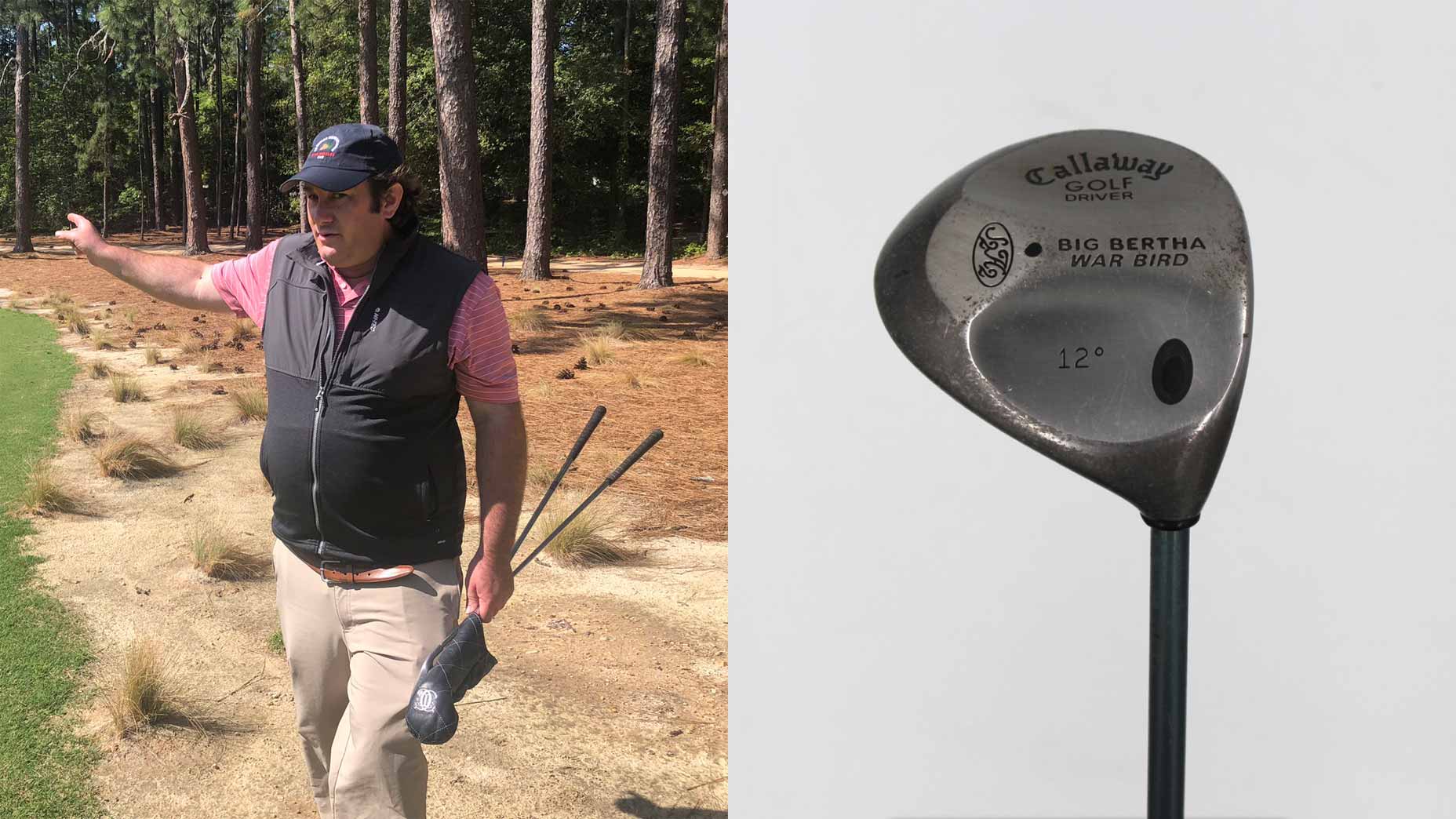Access is perhaps the greatest perk of being a golf writer. Course access, specifically. We spend most weeks hunched over our keyboards. But on glorious media days? That’s a chance to tee it up where the pros do.
That’s how I found myself on a quick trip to the Sandhills of North Carolina earlier this week. With the U.S. Women’s Open headed to Pine Needles this summer, the resort opened its doors to the media for a preview day. I couldn’t miss it.
Typically, you’re paired with fellow media members as you hit and giggle your way around the course for an afternoon. I assumed this would be the same. But when I met my cart partner, a reporter from the local newspaper, he dropped some exciting intel.
Pinehurst unveils a fittingly awesome new halfway house dubbed the Cradle CrossingBy: James Colgan
“You know we’re playing with the guy who redesigned this place?”
Oh, hell yes.
This outing suddenly had much more intrigue. It’s not often you get to play with the person who shaped the turf beneath your feet. Plus, if one of my shots found a cleverly placed bunker, I could send my gripes straight to the source.
Enter Kyle Franz.
The 40-year-old is one of the brightest young minds in golf-course architecture. He’s worked with the likes of Bill Coore and Ben Crenshaw on the restoration of Pinehurst No. 2 and Tom Doak on his shaping of Pacific Dunes. He’s on the industry’s cutting edge.
But here’s the thing about Franz: His weapons are in serious need of an update.
On the first hole, he unsheathed a Callaway Big Bertha Warbird that’s older than I am (seriously), and he played his second on the par-5 with a Ping 5-wood that was last in production during the Reagan administration.
When Franz wanted to lay back a bit off the tee, he opted for a TaylorMade Burner 2-iron from his high school days, and his approach shots came courtesy of Titleist DCIs from the early 2000s. His clubs have blown past the voting age and the drinking age and are now in the settle-down-and-have-kids phase of life. These babies have some wear.
As someone who was frugal with gear growing up, I know better than to judge someone based on their clubs. But Franz’s setup was that of a golfer who hasn’t touched his set in a decade, not someone as well-respected in the industry as him.
After a few holes, I asked Franz what was up with his setup.
“There’s actually a good reason for it,” he told me. “In the 1920s and 30s when these courses were built, the typical professional golfer hit it about 245 to 260 yards or so. And I hit 90s clubs about the exact same distance across the board.”
Brilliant. We’re playing checkers, while Franz is playing chess. It’s all calculated.
“It’s really helpful from a restoration standpoint,” he continued. “I can take those things out and I can really visualize the shotmaking that the original architects intended.”
Franz’s most notable work of late has been his restorations of courses preparing to host the U.S. Women’s Open. He restored Seth Raynor’s design at the Country Club of Charleston ahead of the 2019 U.S. Women’s Open, and his success there earned him the gig prepping Pine Needles for this summer’s championship.
Getting courses prepared for the best women in the world is just Franz’s speed. In today’s bomb-and-gouge era of professional golf, classic designs can be rendered obsolete by power. But that hasn’t yet happened in the women’s game.
America’s Best Golf Road Trips, Part III: The Carolina Lowcountry Loop, from Pinehurst to Harbour TownBy: Jessica Marksbury
“The distance that the men were hitting it when these courses were designed is about the exact distance that the ladies are hitting it today,” Franz said. “They’re hitting the same trajectory and distance on their shots as Donald Ross was visualizing back then. What we’re designing for them is really what they were gunning for, which makes it a lot of fun.”
In the women’s game, Franz added, shotmaking still comes at a premium.
“It adds a whole different palette of golf shots and distances and clubbing that just isn’t as prevalent in the men’s game nowadays,” he said.
Franz pointed to the restoration work on Pinehurst No. 2 as a prime example. When he worked with Coore and Crenshaw to restore the famed course to its classic roots, they had shots charted from old competitions, such as the 1951 Ryder Cup. But to force the top men’s pros to hit similar clubs into the turtleback greens as the pros of years past, they would have needed more acreage than the property holds.
“For the golf course to play today as (Ross) originally intended, they’d be teeing off up there from Tom Pashley’s office from the roof on the clubhouse,” he said, referring to the Pinehurst Resort president. “It’d play about 8,000 yards.”
Luckily for Franz, that conundrum never permeates into his own game. He pokes it out there well behind where he could but enjoys the round just the same. He plays the game as the likes of Ross and Raynor intended.
But that doesn’t mean he hasn’t thought about getting some updated equipment.
“We’ll see,” he said with a smirk. “Maybe one of these days.”




